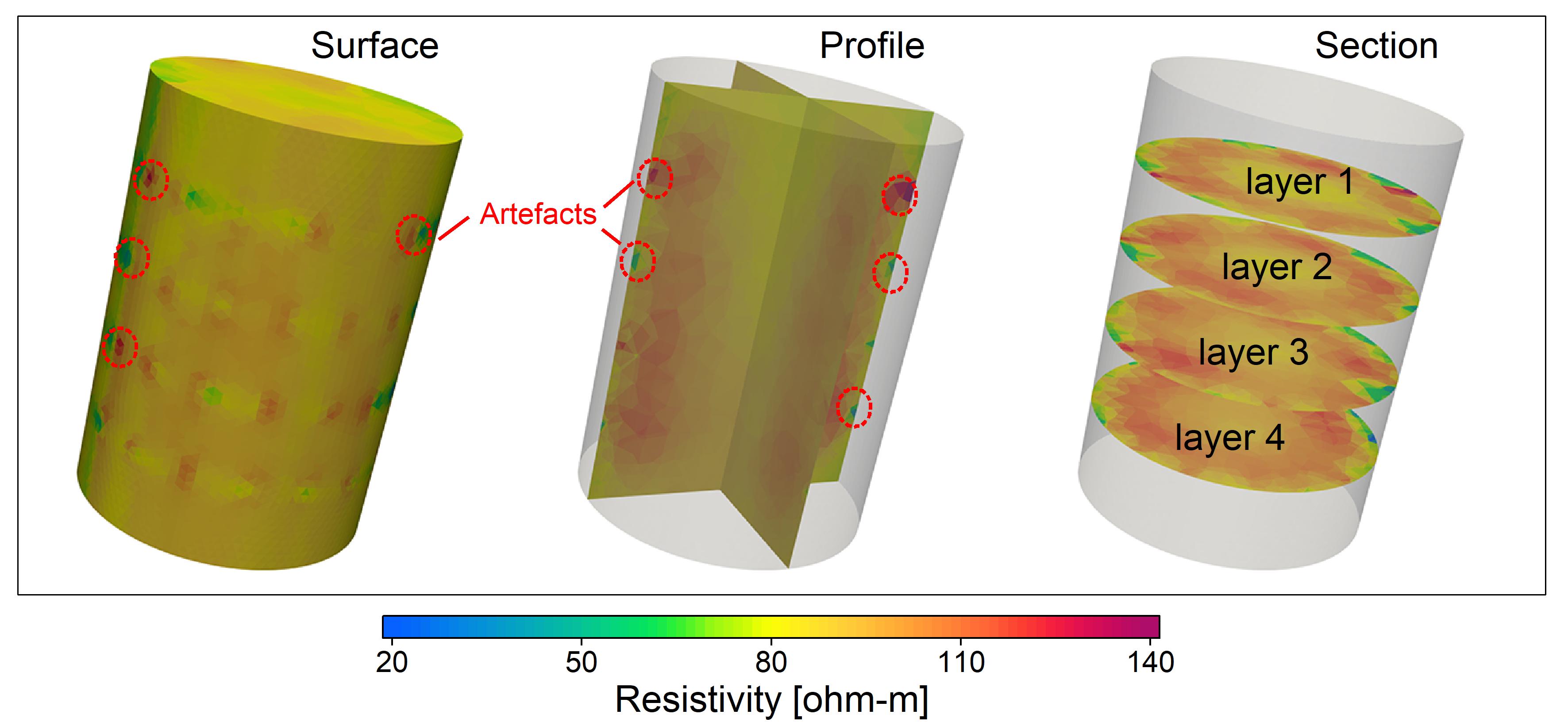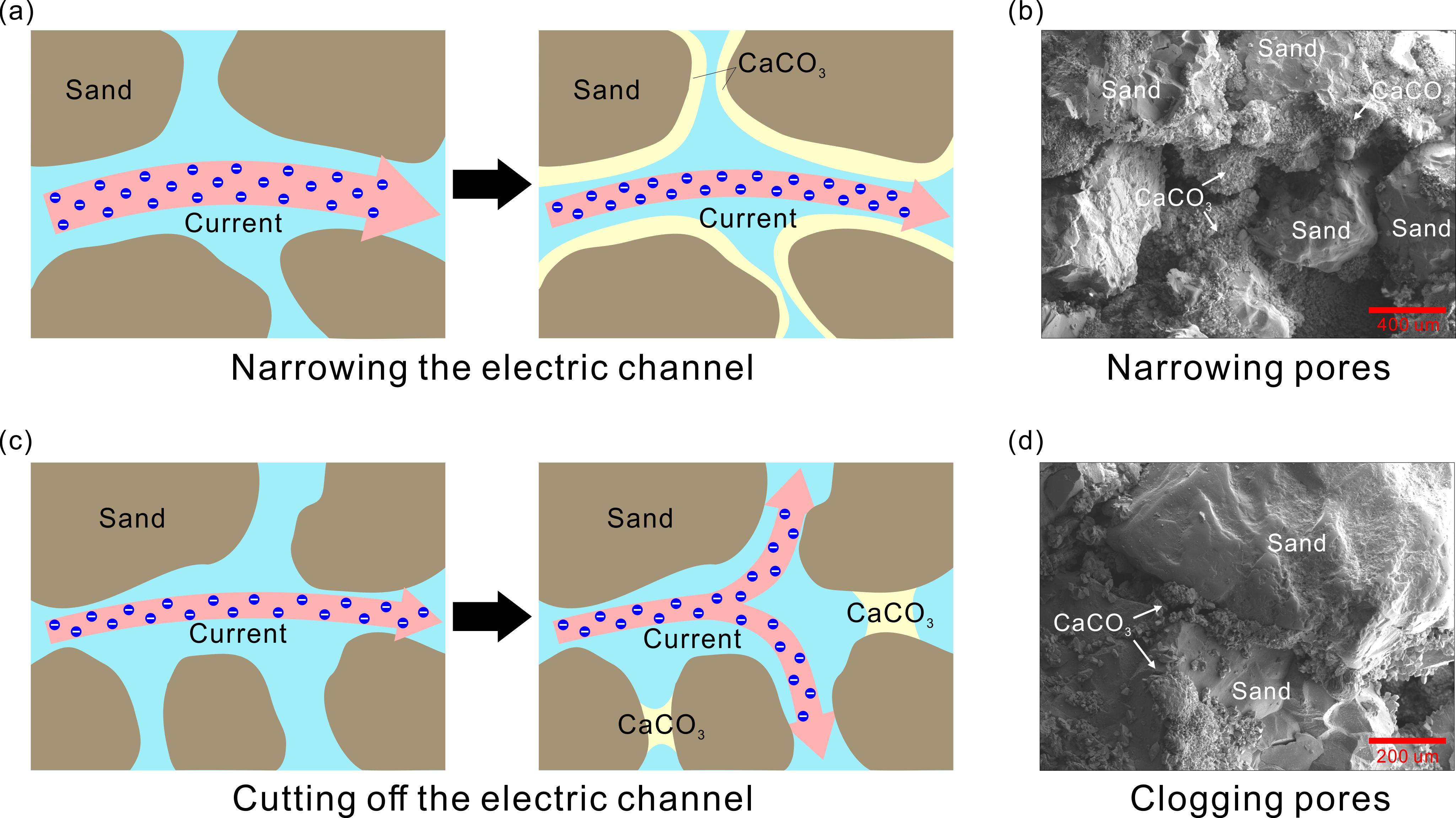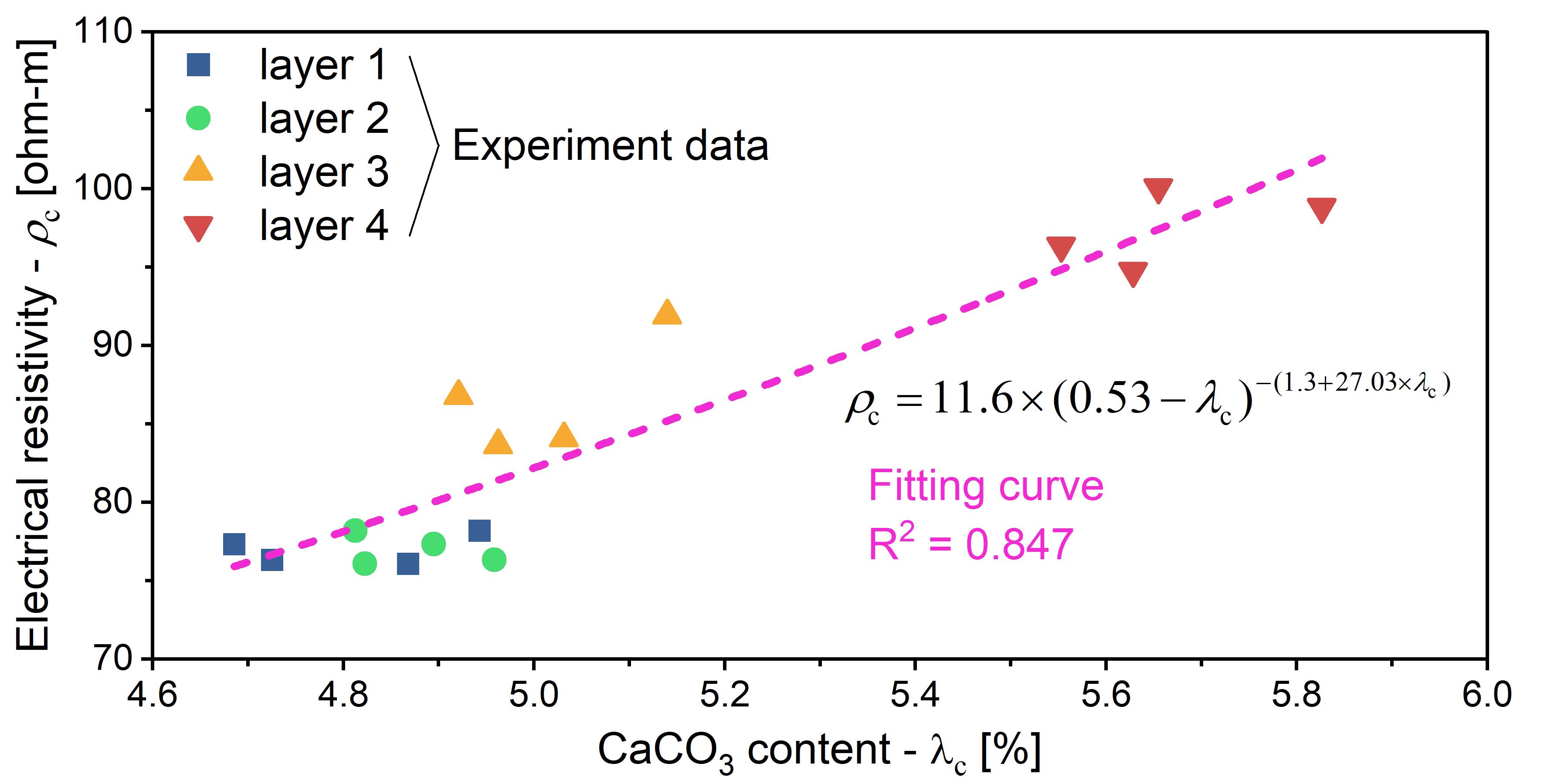Microbially induced calcium carbonate precipitation (MICP) is a promising bio-mediated soil improvement technique. Compared with traditional ground improvement methods, MICP has been proven with extensive applicability and ecological benefits. However, heterogeneity during MICP treatment is a major obstacle in engineering applications, causing a strong need for monitoring methods to investigate the process of treatment and optimize the subsequent design scheme.
Electrical resistivity tomography (ERT) is a non-invasive spatially resolved monitoring technique for visualizing the distribution of both treatment solution and precipitated calcium carbonate in MICP treatment. In this study, three-dimensional electrical resistivity tomography was employed to monitor the bio-cementation process of a sand-packed column. The electrical response over different treatment stages and the final CaCO3 content were collected. Three-dimensional resistivity distribution intuitively characterizes the distribution of treatment solution in the sand column. Changes in the resistivity indicate the spatial variability of the urea hydrolysis and CaCO3 precipitation during the MICP treatment. The final resistivity distribution corresponds to the distribution of precipitated CaCO3, and the relationship between electrical resistivity and CaCO3 content is established.


Figure 1. Electrical resistivity tomographs before and after the MICP treatment


Figure 2. Schematic drawing and relationship between soil resistivity and CaCO3 content
The study serves to explore the potential of ERT as a monitoring method for the MICP treatment process. Of particular interest are its possibilities to contribute to the monitoring of spatial heterogeneity of cementation because of the limitations of traditional techniques in this respect.
The study was published in《Journal of Geotechnical and Geoenvironmental Engineering》(Title: Monitoring and characterizing the whole process of microbially induced calcium carbonate precipitation (MICP) using electrical resistivity tomography). Jun-Zheng Zhang (PhD student) is the first author of the paper, and Professor Chao-Sheng Tang is the corresponding author. The work was supported by the National Natural Science Foundation of China, the Natural Science Foundation of Jiangsu Province and the Fundamental Research Funds for the Central Universities.
Reference:
Zhang, J.-Z., C.-S. Tang, C. Lv, Q.-Y. Zhou and B. Shi. 2024. "Monitoring and characterizing the whole process of microbially induced calcium carbonate precipitation using electrical resistivity tomography." Journal of Geotechnical and Geoenvironmental Engineering, 150, 04023132, https://doi.org/10.1061/JGGEFK.GTENG-11782.

